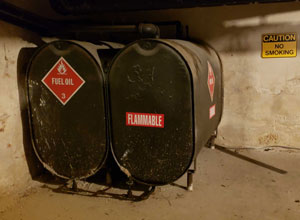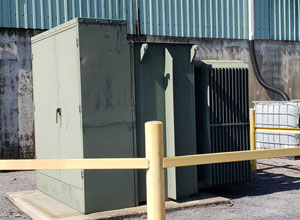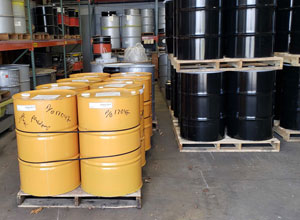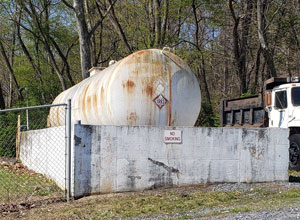Posted by Jasen Book on Monday, August 29, 2022
Despite the United States Environmental Protection Agency’s implementation of Spill Prevention, Control and Countermeasure (SPCC) regulations nearly 50 years ago, facility owners are still discovering that they are subject to oil release planning requirements. There are several contributing factors, including a lack of understanding of exemptions and less demanding state regulations that provide a false sense of compliance.
WHO NEEDS AN SPCC PLAN?
In general, facilities that store oil above ground in quantities exceeding 1,320 gallons, or underground in quantities exceeding 42,000 gallons, must prepare and implement an SPCC Plan.
9 THINGS TO KNOW ABOUT SPILL PREVENTION PLANNING
1. All oil types included.
There is no exemption for the type of oil, regardless of whether it is animal, vegetable, or synthetic in origin.
2. Add it up.
Bulk oil storage containers and oil-filled operational equipment 55 gallons or greater are included toward the aggregate oil volume.

Don’t forget to check the basement! These fuel oil talks located in the basement and basement crawl spaces must also be included in the Plan.
3. Small exemptions.
Containers less than 55 gallons are exempt, and do not need to be included toward the aggregate volume.
4. Follow the discharge.
EPA’s guidance restricts SPCC planning to facilities that can reasonably be expected to discharge oil into surface waters in the event of a spill. However, this has broadly been interpreted to include all facilities, even if a surface water feature is not located near the site. Oil spills that reach a stormwater drain have the potential to impact surface waters a significant distance from the facility, and spills that reach soil can infiltrate into groundwater and contaminate drinking water supplies.
5. Storage creep.
Facilities that gradually expand and add oil storage containers are challenged with planning initiatives because they do not account for added oil storage that grows as the campus grows.

Oil-filled electrical transformers must also be included in the aggregate oil volume at a facility.
We recently prepared an SPCC Plan for a Pennsylvania metals manufacturer that produces high-purity metals, alloys, and metal powders. The campus has more than 15 buildings that have been constructed over the course of 70 years. As additional buildings were erected, new oil storage containers were added and the 1,320 gallon threshold was crossed without the facility’s awareness.
6. Oil-filled surprises.
Don't forget to contemplate release scenarios from oil-filled equipment such as electrical transformers and hydraulic oil reservoirs for elevators or trash compactors.
7. Backup power.
Large healthcare and higher education campuses are particularly susceptible to exceeding SPCC planning thresholds due to emergency generators powered by diesel fuel.

If you have portable oil drums maintained on wooden pallets in warehouse receiving areas for extended periods of time, you need to provide secondary containment. This is one of the most prevalent oversights in managing SPCC compliance.

Secondary containment dikes exposed to precipitation need to be monitored frequently, especially after rain events, to ensure that sufficient secondary containment is available.
8. Secondary containment.
SPCC regulations stipulate that secondary containment is provided for all bulk oil storage containers 55 gallons in volume or more, including portables drums, totes, and larger storage tanks. The containment must be equal to the volume of the largest container located within the containment area. Secondary containment alternatives commonly used for smaller portable containers include spill pallets and berms or dikes. Larger storage tanks are often double-walled construction or situated in containment dikes, over recessed lined pits, or near oil/water separators.
9. Maintaining the Plan.
Once an SPCC Plan is developed, it should be revised and updated as oil storage volumes are modified. If no modifications trigger an update in the interim, the Plan must be re-evaluated every five years at a minimum. Certain facilities require a licensed professional engineer to certify that the spill prevention measures specified in the Plan are adequate. Annual spill prevention training is also required for all facility personnel that handle or transfer oil.
SPCC Questions?
We work with clients across the United States, from heavy industrial manufacturers to bakeries, government clients to healthcare campuses. Our environmental compliance specialists are here to help ensure you are informed and confident in your compliance. Call 610.373.6667 or contact me below.
Categories: Buildings & Campus | Industrial & Manufacturing | Municipal Infrastructure | Oil & Gas Infrastructure
Tagged: Environmental